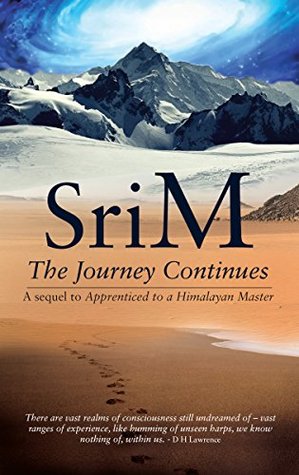More on this book
Kindle Notes & Highlights
So it is the thorn of knowledge used for removing the thorn of ignorance. Both of them are discarded by the yogi, the seeker, whose aim is liberation.
Babaji, what about those who prefer to remain silent after realising the Ultimate Truth?
Babaji: If the perfected sage prefers to remain silent, that silence is more effective than speech or overt action. The sage works silently on the minds of those who listen to the voice of silence. Such a sage has reached the source of all thought and can change the entire world by a single thought. That silence is more potent than hours of lectures. Silently, such a sage works miracles, while himself remaining hidden like the ultimate Brahman. By a single thought of such a sage, Herculean tasks are executed.
Most of us are like these imagined creatures. We cannot conceive of a dimension other than or higher than, the world of our five senses – sight, sound, touch, smell and taste – where the world of the intellect is itself conditioned by the world of sensory experiences. The spiritual journey begins only when the alert intellect recognises the possibility of another dimension, where it cannot reach by normal means of thought or sensory perception, and starts exploring other means to get there. It
What is to be understood is that the world is real only in a relative way but it cannot be real in the absolute sense. Relative reality is essential only as far as it concerns our functioning in the world; no more no less. Unfortunately, to accept relative reality as the absolute reality is the error we fall into and therein lies all our misery.
According to the sages, this abstractness called Brahman is the only true reality, the only true existence. Our intellect can go a step further than our sense only to acknowledge and understand that the Brahman cannot be intellectually grasped. That pure existence, behind the insubstantiality of the world and constantly changing forms, is realized only in deep meditation, beyond the intellect and the mind, when thoughts have completely ceased.
So develop the habit of visualising good and beautiful objects – for instance, a full grown rose or the word Aum in Devanagari script in electric blue or gold – every morning in your mind’s eye and spread happiness and good will mentally to the whole world as you wake
Visualise your desires in complete detail and you are sure to attain them, but never visualise harm to others, for that will arrest your own spiritual development and pull you down the ladder of spiritual evolution. You can imagine yourself to a state of happiness or unhappinesss, it is your choice.
When we go to sleep, keeping our heads towards south and feet towards north ensures a tension-free, restful sleep. In this position, the direction of the body is in accordance with the direction of the earth, thereby maintaining a harmonious balance with the earth’s magnetic field.
The left hemisphere, which controls the right side of the body, is the seat of such capabilities as language, logic, analytical thought, sense of rhythm etc. By constant practice of pranayama, a yogi becomes an adept at activating at will either of the hemispheres.
The key to clear thinking and problem solving is therefore an alert but relaxed mind. Concentration is not tension. On the contrary, it is possible only when the mind is relaxed but attentive.”
know,” said Thakur, “it’s the opium. Have it once and you are hooked forever. There is nothing more intoxicating than God-consciousness.”
is a dualistic philosophy in which Purusha which is pure consciousness is different from Prakriti which is matter. Prakriti or nature has its own laws and attributes and evolves according to the laws that govern its evolution. There is no greater God sitting and shaping things in his workshop. Nature functions according to cause and effect. Prakriti like Purusha is eternal and only keeps changing its state from one to another.
Now, Purusha, the pure spirit has become entangled with matter Prakriti. The process of spiritual evolution is the shedding of the binding factors of Prakriti and going back to the original state of pure consciousness. Even mind or thoughts, both according to yoga and Sankhya, is matter even at its subtlest levels and
the aim of yoga is Chitta Vriti Nirodha, which is first restraining and then getting r...
This highlight has been truncated due to consecutive passage length restrictions.
The Jain system of practice also has a similar background except that it believes in rigorous disciplining of the body and mind, verging on torture, so as to rise above the passions and desires and realize the bliss of resting in one’s original self, free from all material conditions – Nirvana.
define the qualities of a great yogi, Krishna says: one who is in control of his sense organs and emotions; one who remains tranquil and equanimous in the midst of praise or blame, happiness or sorrow; and one who is kind and compassionate and always thinks of the welfare of all living beings.
Yes, read the Yoga Sutras of Patanjali. Swami Vivekananda’s commentary on the Yoga Sutras called Raja Yoga is a must. Also read the Siddha Siddhantha Paddhati and Svatmarama’s Hatha Yoga Pradipika. You may also read the Gheranda Samhita. Another excellent commentary on the Yoga Sutras of Patanjali is the Yoga Sudhakara by the great Sadashiva Brahmendra.


